Chicago is most fortunate to have the ability to draw from creative spirits from close and far. Today, the city continues to be an international arts destination (regardless of your stance, the city is preparing for Expo 2019, the annual international art fair later the month). The ongoing influence of new voices can be seen in the ephemeral and exploratory work of Roni Packer. By way of exploring the difficult nature in working with the color yellow to creating immersive sublime environments to building minimalistic forms, Packer’s investigations are regularly redefining our understanding what new visual voices outline Chicago’s current contemporary art scene. This week the COMP Magazine ran over to Mana Contemporary to visit with Packer to discuss her early influences, fascination with the color yellow, what she values most (at present) in her studio practice and what’s on the calendar for the rest of 2019.
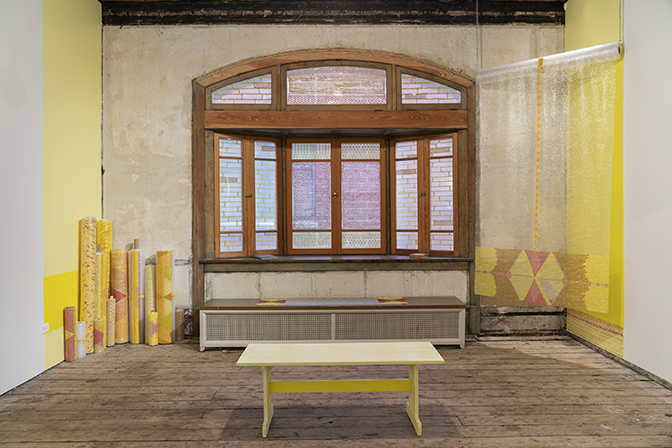
and house paint (installation view), 2018
You grew up in Tel Aviv, Israel, and initially came to Chicago to study at UIC where you located Julia Fish and other prominent practitioners. Can we rewind a bit? You noted your family introduced you to the arts at youth, yet your selection to pursue a career in the fine arts was fairly uncommon in your family. Can you share a bit of family background? I’m most interested in understanding what experience(s) piqued your action to deviate and pursue this life path?
As a kid, I remember loving to color and cut so much that my sister had to hide her unfinished paintings because I often took the risk of finishing them for her and “painting them in the wrong direction”. My mom used to hide all the scissors in the house because I couldn’t stop myself from cutting random things around me.
I grew up in a house that appreciates art. Although my parents are not artists, they both share a love for visual arts. Maybe it comes from my grandma, who had a strong passion for arts and crafts. In the early 90’s she even opened a gallery in Tel Aviv to show crafts as fine arts, insisting that these shouldn’t be separated into two distinct categories. She closed the space pretty fast – maybe she was ahead of her time.My immediate family – my parents, my siblings and my sister-in-law – are all social workers or therapists, so in that sense, I did take a different direction. In the past, I often felt that the path that I chose is not as important.
I still have these thoughts from time to time, but speaking of UIC and the wonderful faculty that I met there like Julia Fish, Matthew Metzger, and Dianna Frid (to name a few) and all the great people that I met along the way brought me back the belief that art can be meaningful.
Also, for me, teaching and working with people help to counter those feelings of doubt.
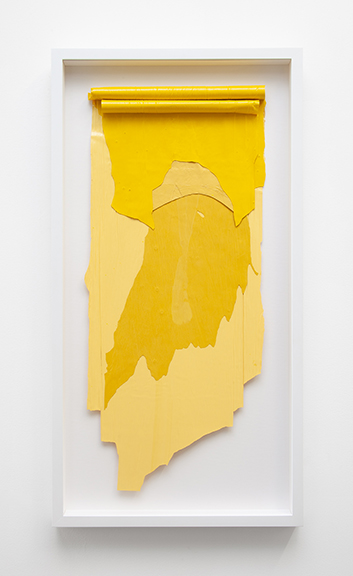
Having lived abroad, I’ve experienced unforeseen influences, aesthetic, political, and social, that impact one’s creative process. Do you see this? Are there any specific new ideas or items you see as having impact upon your studio practice?
Oh yes, I’m not even sure where to start. My studio practice (and my life) have changed tremendously since I moved here. It begins with daily things like the fact that I have more freedom and time to be with myself in the studio (far away from my homeland, there are no big holidays or weekend commitments – on Christmas and Thanksgiving I feel like the most liberated person on earth – but then sometimes I also feel lonely). All of this free time has a big impact on the work. And there are more substantial things like the fact that I’ll always be a foreigner here and that my understanding of the social and political structure will never be the same as yours or as familiar as back home. This works in the other direction too. When I moved here I wanted to bring political narratives from my home region through my paintings, but I found myself with no words to articulate them. I always tended towards abstraction, that’s how I see and think about things. But here the abstraction became even more abstracted, if that makes sense, both in my head and in my work.
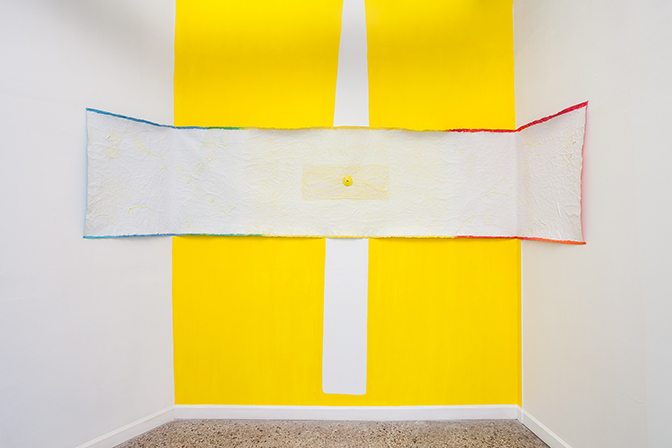
Can we discuss a bit of colour theory. You have a strong colour sense and application where you frequently create works that utilise opaque fields of colour. For instance, the colour yellow surfaces frequently. This is a difficult hue to work with. Can you speak to your intent or thoughts about colour? What do you find engaging, limiting or otherwise?
Recently I had a dream that I know exactly how to sum-up and speak about ‘color theory’ – it was so clear and on point and embodied everything that we humans want from color. But that was just a dream and the only thing I remember from it is how great it felt to have this ‘pure knowledge’. What I do ‘know’ is that most of my early memories involve more colors than words or other things – and today I often experience things through color and I have very strong feelings for colors (almost as much as I have for humans). Small things and objects in the world can drive me nuts if they have ‘wrong’ color combinations. In a way that is how my whole obsession with yellow started. Three years ago, after a short dense visit back home, a yellow memory emerged in my head, it wasn’t a specific vision, but rather a feeling from a faraway place, time and weather – a nonspecific yellow feeling. And so I started to explore a monochrome palate in order to find that ‘right’ yellow. From there it became almost like a force that I can’t control – even when I gave up and realized that there is no right and wrong and that everything is relative (yeah, yeah) I couldn’t stop. I think that working with one color also allowed me to focus on the actual thing – the paint and the canvas. It opened up more room for a material exploration to which I wasn’t able to give my attention before because I was so engaged and troubled with the chromaticity. I also started to think about ownership and the fact that I felt a weird possession of yellow. By allowing myself to admit this embarrassing and somewhat stupid feeling I opened my work to a wider discourse about who is privileged enough to own something but also why do we all feel sometimes that we have possession of different things and humans. I also like to fight about colors – like arguing whether this or that color can live with this color or another. I always have in mind this quote by Thierry De Duve – “As adults, we have learned that colors are a matter of the agreeable”. It is as if we prefer to save our aggressions for more ‘urgent issues’, and color and beauty, unfortunately, are not one of them. When we open ourselves to a shareable ground we are risking disagreement and that’s a good thing, I think.
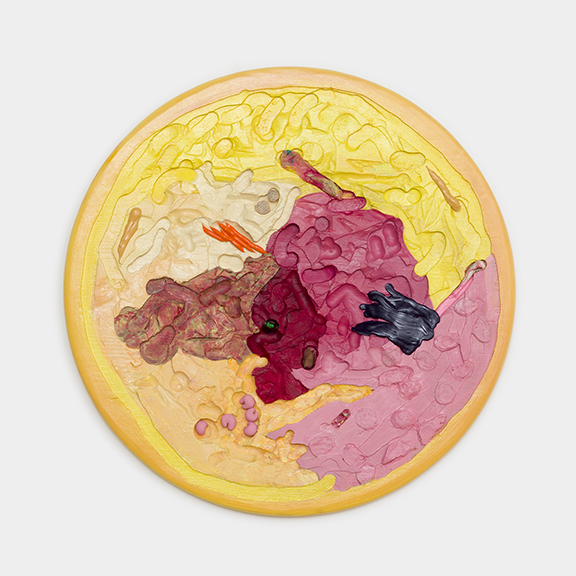
There’s been a pattern in research and presentation in recent time where artists are frequently looking at and investigating ideas and formal issues that initially surfaced during the early 20th century. For instance, Sonia Delauney, Aloïse Corbaz, and Alice Bailly, have been seeing a rise in interest. Though your work is vastly different, there appears a sense of connection to aesthetic approaches. Do you consider past practitioners when producing in the present? Where do you see your practice residing in terms of noting our contemporary milieu?
I’m not sure that I can genuinely name artists that I think about while working. But if there’s one that her spirit ‘visits’ in my studio a lot it is Lea Nikel; other spirits come and go, usually I’m relieved when they leave because my studio is pretty small. I feel related to Nikel’s work in a formal way but I grew up with one of her paintings in our living room and I think that because of that, and the fact that I didn’t find her online or something like that, she will always be the most significant for me. I like to think that this painting is why I started painting, but also why it took me so long – I wanted to create a magical composition like hers and I was afraid that I won’t be able to do so. Today I think very differently about compositions and I don’t believe in magic anymore. And yes, I also love all the female(!) painters that you mentioned, especially – Aloïse Corbaz, and I’m thankful for all women artists that have paved the way for me and others.
I’m going to take a risk with my answer about where I see my practice in relation to the contemporary context – well, I don’t. I mean not in the way that I see my practice as directly influenced by ‘art history’. I often feel that I’m just another creature with a need to be creative and somehow it happened to be that I do that for a living. It calms me to think that way. No one is that fucking important, not me for sure, not even fucking Picasso. I guess that I want to think that we are all equally important, which makes none of us important at all, I don’t know. Its above my pay grade.
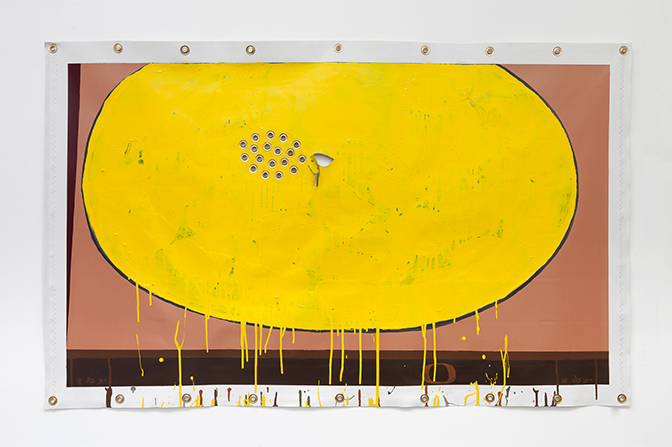
In looking at your paintings (e.g., Lemon #2, 2018), there appears to be a differing approach. Though you strip down form to bare essentials, in the noted there are obviously visible imagery. Can you speak to the difference in how you approach installation works and paintings?
As much as there is a continuing line in the studio and in my head I try to think about each show or installation as a separate project. It gives me more room to play and dare. It makes sense to work in relation to the space that I’m working with (and by space I don’t mean just the architecture, but also the current moment that we are in and the people that I work with). From all of these factors and elements I decide, or rather the space and the moment decide for me how to approach the specific installation.
But I think that I know why you are asking – in the last year or two there are major changes in my work that probably don’t always feel cohesive to an outsider. Honestly, these ‘different approaches’ are not even always clear to me, and I still wonder if that’s a problem or not. As artists, we are expected to generate some tight unit practice but maybe it is just some bulshit capitalism wants from us?! I do move between a complete minimal abstraction to a more figurative one in relation to what I want to say and what will be the best way to say it. For example – for my showP.S my Favorite Color is Greenat Slow, where I showed Lemon #2and other paintings that can be described as more figurative, I worked around a letter that I got from an inmates I worked with as part of a workshop at the high-security division at Cook County Jail. In thisletter, he continued a conversation that we had about my interest in the color yellow and details his “yellow research”.In one of the sentences that caught my attention he writes “…any of groups of colors of a hue resembling that of ripe lemons”. Reading it the only thing that I could think about is the fact that at CCDOC fresh fruits or vegetables are no longer part of the inmates’ daily menu. I realized that he might not see or taste a real lemon for the rest of his life. Nor will he see my favorite painting at The Art Institute – Lemons on a Pewter Plate by Henri Matisse.
Working on this show it was, as always, me and my struggle with the material but this time it felt important to actually paint the lemon. On the other hand, for my latest show Consider Pink (and others’ Great Yellows)at BasementI worked in a very abstracted way without exactly knowing what I was doing besides the fact that I want to amass yellow moments from other artists while omitting my own yellow and presenting fleshy tones instead.
Only when I was done making the work I realized that the pink and the enamel paint became a signifier for the internal and the body while the yellow became more related to the outside and the space.
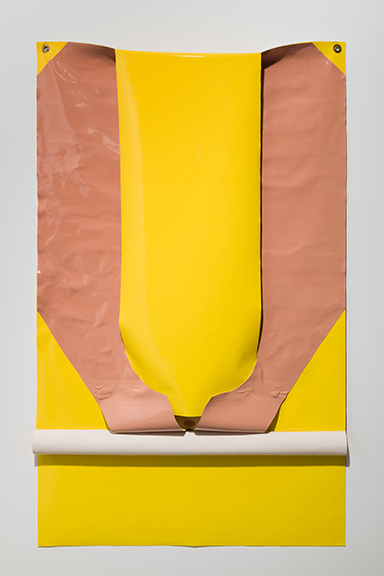
What do you value most in your studio practice?
The fact that I have it. I used to take it for granted but lately, I have become more and more appreciative of the fact that I have a studio and the time to go there. It’s a privilege but one that comes with many obligations. I’m pretty strict when it comes to my studio daily routine – I feel like something will go wrong if I’m not there for more than a day.
I value the late afternoon light that enters through my western window. I value the moment that I take a break to eat lunch and stare at my work. I value the visits and the people around me that take the time to look at my work. I value the people that support and like my work (and the people who’re not but dare to say it out loud). I value my partner who supports me in different special ways. I value the fact that I have a door in my studio, one that I can lock or leave a narrow slit or open widely – both metaphorically and not.
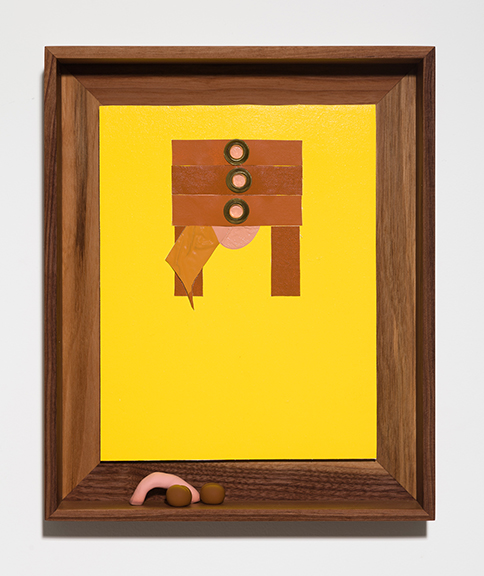
You have a full calendar of exhibitions and projects currently underway. You are preparing for Consider Pink (and others’ Great Yellows), and have a number of works for which you want execute. So, what’s the plan for fall 2019?
Yeah, Consider Pink (and others’ Great Yellows)at BASEMENT, Scott J Hunter’s new project space has opened on August 25thand will be up until December 20th. I’m truly happy to be the first artist to present a project there and it was a very interesting and exciting journey to make site-specific works for such a raw space, to explore Scott’s amazing collection and to pick others’ great yellows.
As for upcoming projects and shows: on September 14thI have an opening of a two-person show with Lyndon Barrios Jr at LVL3 titled. Question and Answer. Barrios Jr is a very interesting artist from St. Louis and I’m grateful for LVL3 for this pairing and opportunity. Also, I’m so happy to be part of the LVL3 both at the. Barely Fairalongside Soo Shin and Susan Pasowicz from Arts of Life. This miniature art fair hosted by Julius Caesar presents a tiny peek inside the programming of two dozen galleries and project spaces during “Art Week” in Chicago. Included spaces will exhibit works in 1:12 scale booths built to mimic the design of a standard fair. I love this concept and ‘small things’ make me happy so I’m super excited about that too.
At the end of October, I’m going to show at Lubeznik Center for the Arts in Michigan City as part of. Living Architecture– a group show that looks backwards and forwards to ask vital questions about how we remember immigrant creativity in a purpose to envision a new future. The show was originally exhibited at 6018 NORTH last summer and was co-curated by Tricia Van Eck and Teresa Silva with Nathan Abhalter Smith with over 50 artists and public events. Now, a smaller version of the show is moving to Michigan City curated by Tricia Van Eck with Nathan Abhalter Smith and Lora Fosberg from the Lubeznik Center.
And in February I was invited by Yaniv Lachman to have a solo show in Tel-Aviv in. Almacén Gallery. This show will be curated by Orit Bulgaru and I’m already really enjoying working with both of them. In between, I plan to travel and to repress the fact that winter is coming.
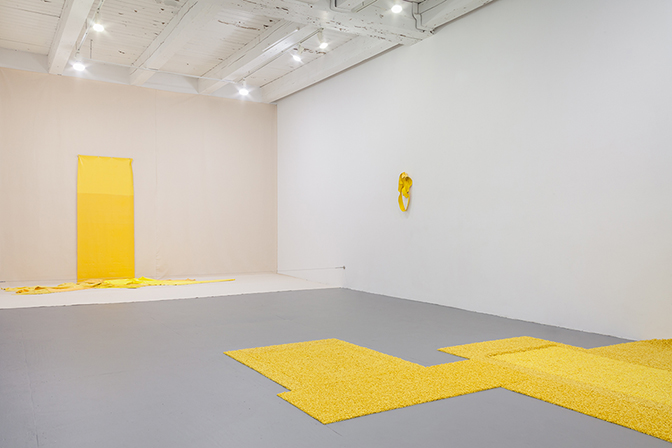
Chicago Artists Coalition, March 2018
For additional information on the studio practice of Roni Packer, please visit:
Roni Packer – https://www.ronipacker.com
LVL3 – http://lvl3official.com/roni-packer/
Chicago Artist’s Writers – https://chicagoartistwriters.com/roni-packer-p-s-my-favorite-color-is-green-at-slow/
Scott & Birdie – https://www.scoutandbirdie.com/yellow-is-mine-by-roni-packer
Spudnik Press – https://www.spudnikpress.org/shop/artwork/published-artwork/yellow-again-by-roni-packer/
The Visualist – http://www.thevisualist.org/2019/03/roni-packer-p-s-my-favorite-color-is-green/
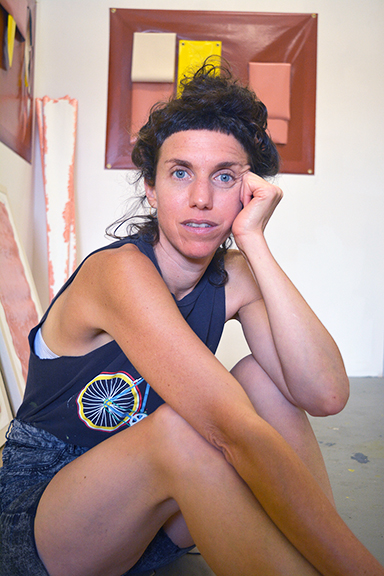
Artist interview and portrait by Chester Alamo-Costello


